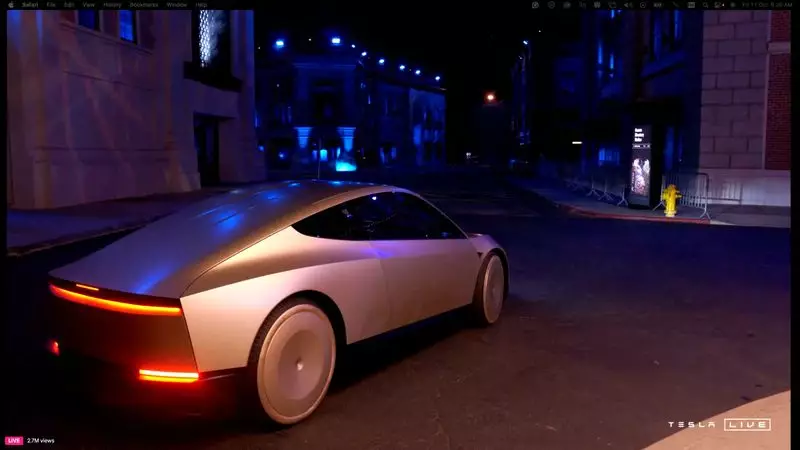Elon Musk, the enigmatic CEO of Tesla, made a striking announcement recently that has the potential to alter the landscape of the automotive industry. During a meticulously orchestrated event at Warner Bros studio, Musk unveiled the futuristic Cybercab—Tesla’s vision for a fully autonomous taxi service devoid of traditional controls like steering wheels or pedals. With the introduction of the Cybercab, Musk aims to solidify Tesla’s position not merely as a manufacturer of electric vehicles but as a frontrunner in the realm of artificial intelligence and robotics. This bold step toward a new era of mobility has been met with a blend of excitement and skepticism within the tech and investment communities.
With production slated to commence in 2026 and a target price below $30,000, the Cybercab presents an affordable option for consumers keen to embrace autonomous technology. Musk emphasized the economic efficiency of such vehicles, claiming they could significantly lower operational costs to merely 20 cents per mile. This proposition holds substantial appeal in a market where consumers are increasingly price-sensitive and environmentally conscious. Musk argues that vehicles currently spend a large majority of their time idle; via autonomy, these Cybercabs could be utilized far more effectively, achieving utilization rates that may climb five to tenfold.
However, the path Musk envisions is fraught with obstacles. For starters, there are pressing questions regarding the technology readiness of Tesla’s current Full Self-Driving (FSD) software. The interplay between operational feasibility and regulatory approval will be critical in determining how quickly Tesla can roll out this services and potentially disrupt traditional taxi services.
At the unveiling, the event was star-studded, with industry notables and analysts present, generating considerable buzz across social media platforms. The anticipation surrounding the event underscores the strong following Musk has cultivated, which is essential for rallying support as the company moves forward. However, analysts remain cautious. The optimism surrounding the Cybercab is tempered by ongoing concerns about Tesla’s FSD program, which has faced scrutiny due to safety issues—including fatal accidents that have drawn legal and regulatory attention.
Moreover, Musk’s prior proclamations about operational robotaxis by 2020 have not materialized, raising questions about the credibility of his timelines. This history of missed deadlines compels investors to prudently assess the viability of a fully autonomous fleet. The stakes for Tesla are particularly high, especially considering that 2023 may represent the company’s first decline in deliveries, as traditional market drivers become less effective against a backdrop of rising interest rates and stiff competition.
For Tesla to fulfill its ambitious vision, it must not only address its internal challenges but also confront a competitive market that includes established players like Waymo and various startups. While Tesla’s reliance on cameras and AI rather than more expensive hardware such as lidar distinguishes it from competitors, it also raises concerns about the robustness and reliability of the technology amidst diverse driving conditions and scenarios.
The pathway to establishing a successful robotaxi business remains filled with complexities not just from a technological standpoint, but from operational and regulatory perspectives as well. Key questions linger about the economic model: How will individual Tesla owners participate in the robotaxi market? Will they be able to generate meaningful revenue by employing their own vehicles or will they need to rely on Tesla’s centralized fleet dominance?
As the automotive landscape transitions toward electrification and automation, Tesla finds itself at a critical juncture. While Musk’s aspirations for the Cybercab reveal a bold ambition to lead in both vehicle sales and taxi services, the realities of execution will demand unprecedented transparency, accountability, and innovation. Investors will be watching closely for concrete developments and will expect rigorous advancements in FSD capability, alongside assured compliance with regulatory norms.
In a world where technology continues to evolve at a breakneck pace, Musk’s vision compellingly intersects with a collective yearning for smarter, more efficient transportation. It’s a vision filled with potential; the question remains whether Tesla can translate that potential into reality in a timely manner.

